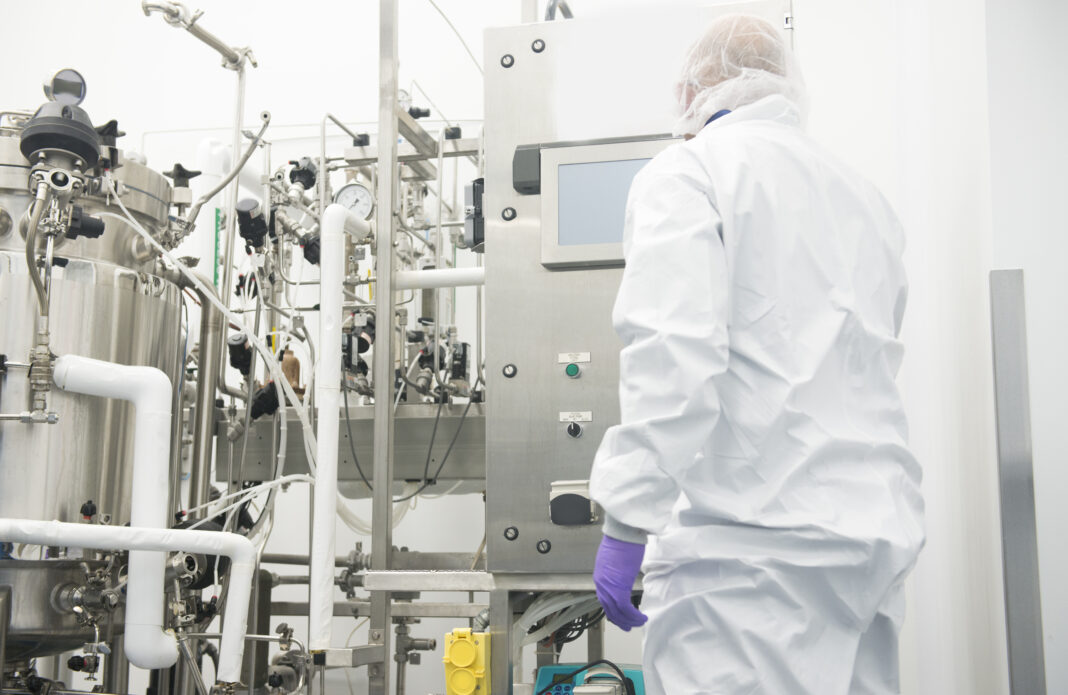Next-generation manufacturing of monoclonal antibodies (mAbs) will rely on continuous processes featuring single-use adsorbents, small-footprint production, and minimal aqueous buffer volumes, according to experts. These characteristics, says Stefano Menegatti, PhD, professor in the department of chemical engineering at North Carolina State University, enable process intensification, accelerate product delivery to clinics—potentially shortening “bench-to-clinic” times for newer biotherapeutics—while reducing the environmental impact of biomanufacturing.
“In this context, downstream processing will play a critical role. Specifically, chromatographic adsorbents operating continuously, ideally in flow-through mode, are well-suited to continuous, rapid purification based on passing product fluids through adsorbents which retain impurities while allowing product to flow through,” he says.
Continuous impurity clearance, however, is complicated by the diverse titers, physicochemical properties, and mechanisms of toxicity for host cell-derived DNA, host cell proteins (HCPs), etc. “Accordingly, designing adsorbents that rapidly capture the entire assembly of process-related impurities, including HCPs, DNA, endotoxins, and adventitious agents becomes challenging,” continues Menegatti.
HCP clearance remains particularly difficult despite significant effort by academics, vendor companies, and drug sponsors.
“Very small and large contaminants can be removed by size-exclusion methods, while anion exchange removes DNA and RNA,” points out Menegatti. “HCPs, by contrast, are much more diverse and potentially dangerous to patients.”
Affinity Flow-through Chromatography
Menegatti’s team at North Carolina State University, which included post-doc Wenning Chu, PhD, has introduced a novel technique for HCP removal, affinity flow-through chromatography (AFTC), which uses synthetic peptide ligands to capture the entire spectrum of HCPs in process fluids from common mammalian expression systems, while preserving both the yield and quality of the mAb product.
The novel adsorbent, described in technical detail here and here, is commercialized by LigaTrap Technologies under the brand name LigaGuardTM.
Analysis of effluents obtained via continuous injection of clarified CHO cell culture harvest through this new adsorbent medium, at different loading conditions, showed consistently high recovery of mAb product and effective clearance of CHO.
“Specifically, we measured HCP clearance using both HCP-specific ELISA kits (for general removal values) and by proteomics via mass spectrometry, which returned clearance values for individual HCPs,” Menegatti tells GEN. “The latter analysis is becoming increasingly relevant for validating HCP clearance, particularly for HCP species that are difficult to remove via traditional chromatography and which pose a specific threat to the patient’s health.”
These novel ligands could help to transform downstream processes, which currently rely on bind-and-elute batch processing, to continuous, connected chromatographic trains operated in flow-through mode.
While initially developed for mAb processing, AFTC works with non-mAb therapeutic proteins as well.
“Since it captures only impurities while allowing product to flow-through unbound, AFTC is product-agnostic and therefore complements current platform processes,” says Menegatti, “especially with HCP scrubbing for hard-to-remove contaminants in product polishing.”
AFTC is applicable as well to the purification of non-protein biotherapeutics, e.g., those based on viral vectors. Viruses are much larger than proteins but much lower in titer than protein impurities typically encountered in mammalian cell culture. AFTC is easy on virus products, many of which are sensitive to HCP removal conditions.
“Adeno-associated viruses, for example, are prone to irreversible adhesion and aggregation, while lentiviruses are sensitive to pH excursions outside of the physiological range,” explains Menegatti. This explains why affinity-based HCP clearance fails to provide product in sufficient yield and quality.”
AFTC-based resins are also versatile in terms of their size exclusion capabilities. With virus-based processes it is possible to adjust the medium’s pore sizes to allow HCPs to enter and viruses to flow through, with minimal residence times for product.
AFTC also has applications for non-therapeutic protein purification, e.g., for reagents, diagnostics, and even food products. Many such products suffer from biochemical lability which complicates large-scale purification and limits product throughput and quality.
Achieving continuous bioprocessing, where “everything is connected” in space and time, will require improvements and inputs from a variety of unit operations and steps within those operations. HCP removal is just one piece of the puzzle, but one that is essential for the wider adoption of continuous processing, particularly for purification.


